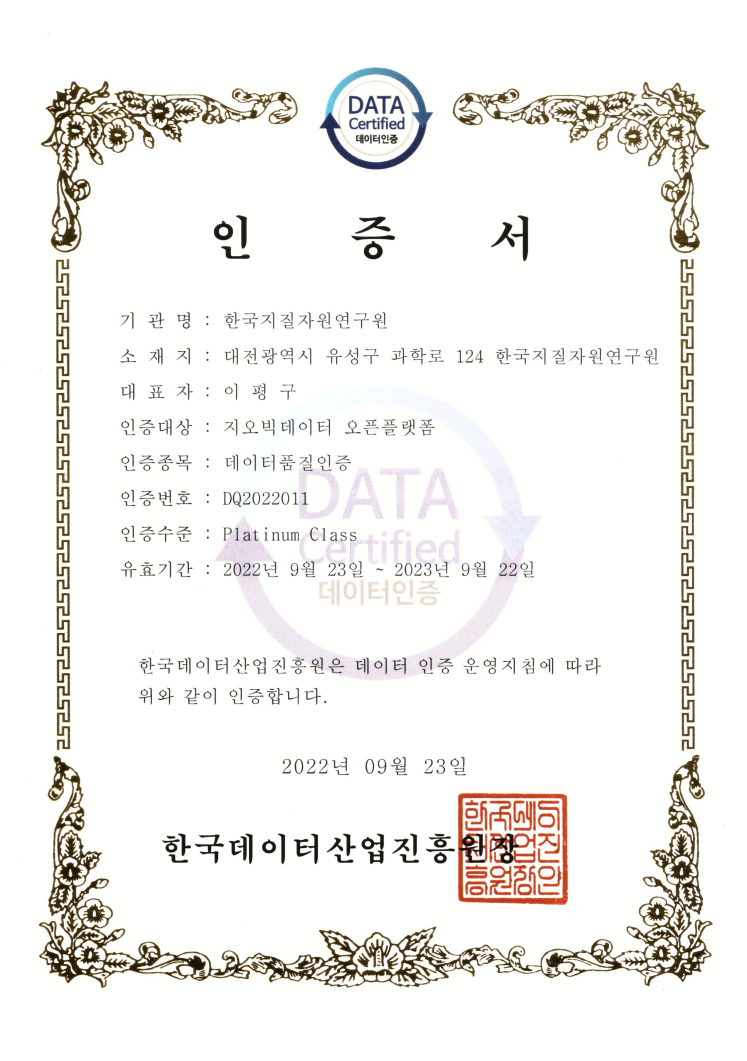Data Quality Certification (DQC-V)

| Data type | KIGAM 보고서 |
|---|---|
| Title | 광산 폐자원 활용기술 개발 연구 |
| Author | 박경호 |
| Language | KOR |
| Call Number | KR-98-C-26-1998-R |
| Publication Information | 韓國資源硏究所, 1998 |
| Abstract | (1) Objectives and significance: Up to now, it is estimated that more than 50 million tons of mineral wastes have been generated mining industries and deposited on the land in Korea. Much of cultivated land and hilly areas have been occupied by this wastes, which cause pollution of the environment. Utilization of the mineral wastes is preferable to stabilization because full use would both eliminate the waste and broaden the mineral resource base. Therefore, the development of utilization techniques of mineral wastes is very important not only for improving the environment but also for resource conservation. In countries with high population and poor natural resources like Korea, the utilization of these wastes is essential to decrease the environmental problem and the secure the resources and the study on this field play a important part. Therefore, the objective of this study is to develop the utilization techniques of the mineral wastes. (II) Contents and Scope: In first year's research, the contents and scope of this study are 1) Present condition and Field Survey on the mineral wastes with respect of their utilization. 2) Reviews of Current effects and researchs to utilize mineral wastes. 3) Characterization of mineral wastes and environmental test. 4) Evaluation and study on the utilization. (III) Results and Rcommendation: 1) Present conditions and Field Survey on the mineral wastes with respect of their utilization and analysis of the mieneral wastes was conducted to examine available waste deposits with respect to their suitability as sources of raw materials for utilization and to determine an order of priority. Three different metallic mineral wastes from 8mines were tested: gold and silver mines (Kumjung, Jeil, Enchi, Dadeok), tungsten mine (Sandong), and lead and zinc mine (Yeonhwa). 2) the average particle sizes (d50) of samples are in the range of 45 to 175㎛ with normal particle size distributions. The main mineral of all samples is quartz and the mineral wastes of lead and zinc mine contain iron, sulfur, and heavy metals usch as lead, arsenic and cadmium. 3) For environmental pollutions, as samples passes pH tests but samples of Kumjung, Enchi and Dadeok do not satisfied the dissolution test of heavy metals. 4) The success of the utilization is dependent primarily upon their economic feasibility and the economic criteria are: ① availability of the potential resource, ② nature of tenor of the potential resource, ③ cost of recovery, ④ cost of transportation and marketing, ⑤ price of the marketable product. 5) The main minerals of the minerals wastes tested and the valuable product are follows; .... 6) With cosidering technology, economics and social concern, the mienral wastes from Sangdong, Jeil and Yeonhwa mines can be used as building materials to make cement, concrete, blocks and so on. Tailigs from Yeonhwa mines can be utilized as pigment and ferrite materials with mineral processing and roasting. On the other hand, the concentrate containing gold and silver and silica can be retrieved from Jeil mine |
| Page | 136 p. |
| Keyword | 광산, 폐자원, 활용, 폐기물, 광산폐기물 |
| Source |
Comments